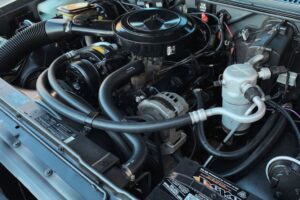One thing that causes anxiety and panic to vehicle owners is seeing the check engine light turn on. This is especially true when you just changed the oil. What could cause the check engine light on after the oil change?
The check engine light typically signals when something is wrong with the vehicle. When it turns on, it could mean something seriously wrong. However, there are also times when this light turns on even because of a simple loose gas cap. Still, a recent oil change done correctly should not cause the check engine light to appear.
Read on to learn more about why the check engine light turns on after an oil change and what you can do to fix it and prevent it from happening again.
Why Does the Check Engine Light Go on After Oil Change?
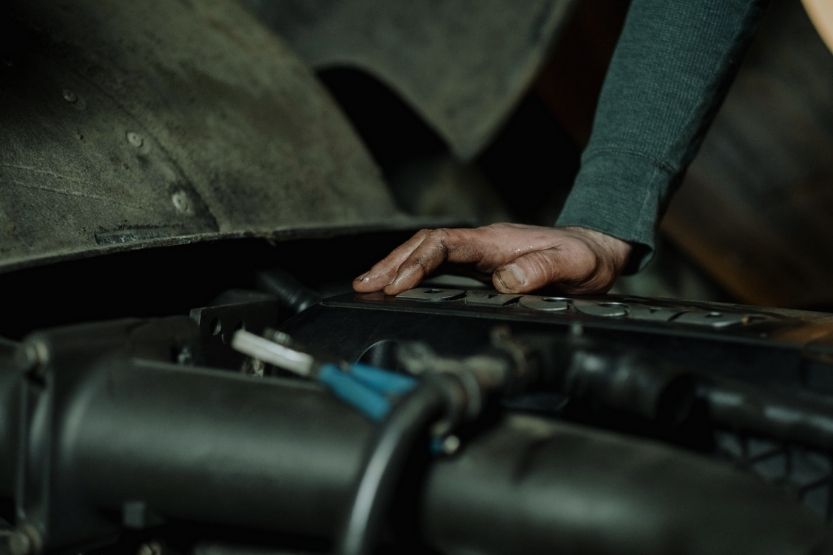
You would think that an oil change, a beneficial maintenance job, would not cause car problems. However, note that there are instances when it does cause a bit of alarm. This is especially true when you get a check engine light afterward.
Here are the reasons why the check engine light turns on after an oil change:
1. Lack of Oil Pressure
Changing the oil properly should not cause the check engine light to come on, at least not temporarily. It also resets the oil pressure gauge when you drain the oil from your car’s engine. Replacing the oil and installing a new filter will not give the gauge enough time for a correct reading.
This makes the check engine light turn on because the car “thinks” it is low on oil. Give it a couple of minutes to allow the oil pump to circulate the new oil all over the engine. These steps should be enough to get rid of the check engine light.
2. Crooked Gas Cap
Sometimes, it might not even be the result of the oil change. You just thought it was. For instance, many cars these days would flash the check engine light if the gas cap was screwed on wrong/crooked. You might have filled up the tank after changing the oil and put the gas cap loosely.
Check your gas cap and replace it properly. Start the engine and wait a couple of minutes to see if this fixes the issue.
If you have a cracked or damaged gas cap, that might be the issue. The cap keeps the fuel under pressure. This makes it easier to flow into the engine and prevents the fumes from escaping. If the gas cap does not make a good seal, it could cause the check engine light to turn on.
How to Reset the Fuel Cap Indicator Light?
3. Oil Sensor Did Not Reset Properly
How to Reset the Check Engine Light after an Oil Change? – Method 1
Alternatively, if your car allows it, you can reset the check engine light when it turns on after an oil change. Here’s how you can do this:
- Turn the key in the ignition. Wait for all the indicator lights to turn on. Do not start the engine;
- Find the “reset” stick. This is usually in the gauge cluster, between the speedometer and tachometer (if you have one);
- Press the “reset” stick until the check engine light starts to blink, which means you successfully reset it; and
- Take the key out of the ignition, put it back, and start the car. By now, the check engine light should be off if there are no other issues with the engine.
How to Reset the Check Engine Light after an Oil Change? – Method 2
Here’s another way to do it if the previous one did not work:
- Repeat the step 1 of the prior method;
- Step on the gas three times quickly. You should do it within a five-second window; and
- Start the engine. The check engine light should have reset and will not turn on now.
If that didn’t work, you need to look for your vehicle’s fuse box. Inside, you should find a reset button. Press on that until you hear a beeping sound. This should reset the check engine light.
4. Incorrect Oil
This means it is possible that you used the wrong oil weight, grade, or viscosity. For instance, if your vehicle requires 5w-40 oil, you mistakenly put 0w-40 oil because you think they’re the same.
Not Enough Lubrication
Using too viscous oil can result in not giving enough lubrication and not transferring heat properly. This could lead to the oil heating up too much, thus causing the check engine light to go on. If this is the case, you will need to drain the oil. Replace the oil filter, then put in the right grade oil. Hopefully, this would do the trick.
Again, what causes the check engine light after the oil change to turn on? Usually, the check engine light turns on after an oil change due to a backway oil filler cap or not fully seated oil dipstick. To fix this issue, remove the cap, then properly fit the cap, or seat the dipstick correctly. Then, restart the engine up to three times.
Other Reasons Why Your Check Engine Light Turns On
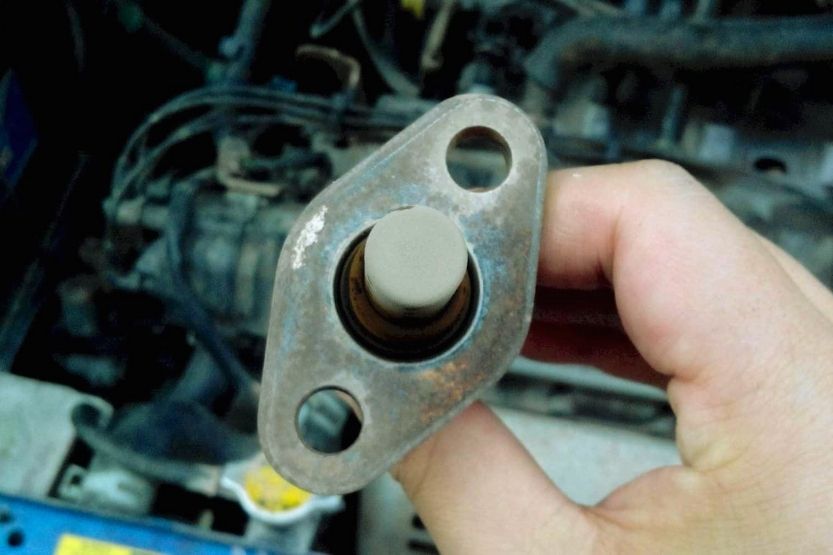
There are plenty of other reasons why the dreaded check engine light turns on. They can be minor issues, or they might also be serious ones. Worst case scenario, it will not be safe to drive your car anymore. You may need to have it towed to the mechanic’s garage.
Here are some of the common reasons why the ominous check engine light would turn on:
1. Faulty Oxygen Sensor
The oxygen sensor is the part that keeps an eye on how much fuel the vehicle’s engine is burning. Typically, vehicles have either two or four oxygen sensors. Even if one of those malfunctions is enough to trigger the check engine light.
A faulty O2 sensor can greatly decrease the car’s fuel efficiency and increase emissions. If left unchecked, faulty O2 sensors can damage the catalytic converter. This can cost more than a thousand dollars to replace. Meanwhile, it will only cost you $250 on average to replace the O2 sensors. It is even possible to do it yourself.
2. Faulty Catalytic Converter
The catalytic converter is one of the most important components in the exhaust system. It turns harmful carbon monoxide into relatively harmless carbon dioxide before it passes out the muffler tip.
The catalytic converter is not an overly complicated part, but it is expensive to replace. It is the reason why it is important to maintain it properly. You can get regular engine oil changes and replace the spark plugs when needed.
3. Old Spark Plugs and Faulty Ignition Coil
As the name suggests, the ignition coil provides the initial jolt to the spark plugs. It will then ignite the fuel in the cylinders. A faulty ignition coil or spark plug can cause cylinder misfires. This is enough to cause the check engine light to turn on.
In addition, old spark plugs make your car’s acceleration significantly sluggish. Take that as a sign to get them replaced even before the check engine light turns on.
This will only apply to gasoline-powered vehicles, as diesel vehicles have neither ignition coils nor spark plugs.
4. Malfunctioning Airflow Sensor
The Mass Airflow Sensor (MAS) monitors the amount of air entering the engine. It helps the car’s computer (ECU) calculate how much fuel it needs to inject into the cylinders to ensure an efficient burn. If the MAS malfunctions, it can cause increased emissions due to the unburned fuel getting burned in the exhaust. It also causes the engine to stall.
One of the most common reasons the MAS would malfunction is a blocked air filter. The air filter needs regular cleaning. You may also have to replace it if it is too old. If you don’t, it will prevent enough air from getting inside the engine and cause the sensor to fail.
Keep in mind that a new air filter rarely costs over $10. However, a mass airflow sensor can set you back upwards of $400, so replace the air filter regularly.
5. Engine Coolant Thermostat Needs Replacing
The engine thermostat works just like any other thermostat, except that you use it to regulate the engine’s flow of coolant. If the thermostat malfunctions, it can cost the engine to overheat. If that happens too often, it could cause the check engine light to come on.
In addition, the malfunctioning thermostat could cause the engine coolant to heat up considerably. This can further lead to the leaking of the radiator.
If enough coolant leaks out, the engine will overheat. You can easily detect if your radiator is leaking if you see a puddle of green liquid in your driveway.
6. Exhaust Gas Recirculation Valve Needs Cleaning or Replacing
The Exhaust Gas Recirculation (EGR) valve lowers harmful nitrogen oxide from the car’s exhaust. It does such function by rerouting it back into the combustion chamber.
Most modern cars come with computer-controlled EGR valves that automatically open and close. However, if the flow seems off, it could trigger the check engine light.
Excessive Carbon Buildup
The EGR valve starts to malfunction because of the excessive carbon buildup, which causes them to stick. This is the issue if your engine “hiccups” a bit when idling. You need to take your car to the mechanic to clean the EGR valve.
The reason is that it is quite hard to access it without the necessary tools. If you leave this issue, causing excessive carbon buildup, you might need to replace the valve and gasket. This will set you back more than $500.
Those are just some of the most common reasons your car’s check engine light might turn on. There are plenty of other issues that might cause it. They are serious enough to warrant a trip to the mechanic as soon as possible.
Is It Safe to Drive with the Check Engine Light On?
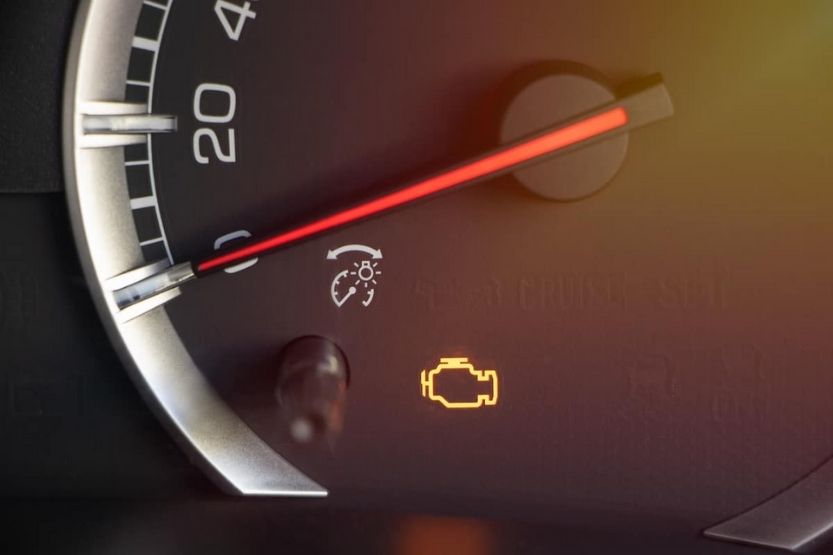
If you see the check engine light come on while driving, it’s normal to feel nervous and anxious. However, you should not panic. Take a deep breath and observe your car if it is behaving differently. Are there unusual noises coming from the engine? Is the car bucking or shaking?
It may be safe to continue driving if you don’t notice anything unusual aside from the check engine light.
The cause might be anything from a bad catalytic converter, faulty MAF sensor, or similar. However, even though it is safe to continue driving, you need to take your car straight to the mechanic. This is to figure out what went wrong.
You should never ignore the check engine light, even if it seems like your car is running just fine. It might be telling you that there is an essential component that needs your attention. If you continue to ignore this warning, it might result in an expensive repair in the future.
Conclusion – Check Engine Light on After Oil Change
Every time the check engine light turns on, something is wrong with the vehicle. Sometimes, the issue might not be serious, like a loose gas cap.
However, it can also be an omen that something is seriously wrong with the car. However, it is unusual if the check engine light comes on after the oil change.
Although it is uncommon, a check engine light does happen. Now that you know the possible causes, you can somewhat do something about it. However, I strongly advise that you take your car to have it professionally inspected to be sure.
Related reading:
How Long Can You Drive with Check Engine Light On?
Check Engine Light On and Off Intermittently [Causes and Fixes]

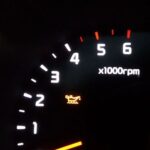
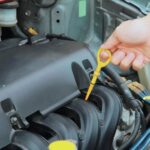
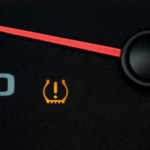

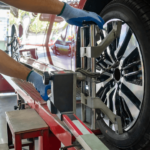
![Oil in Coolant [Causes and Solutions to Coolant in Oil] oil in coolant](https://roadsumo.com/wp-content/uploads/2021/10/oil-in-coolant-150x150.jpg)
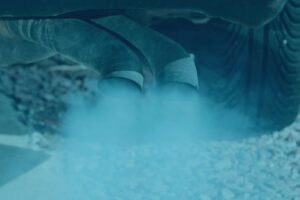
![Read more about the article Gravity Bleed Brakes Alone – How To [One Person]](https://roadsumo.com/wp-content/uploads/2021/05/gravity-bleed-brakes-300x200.jpg)
